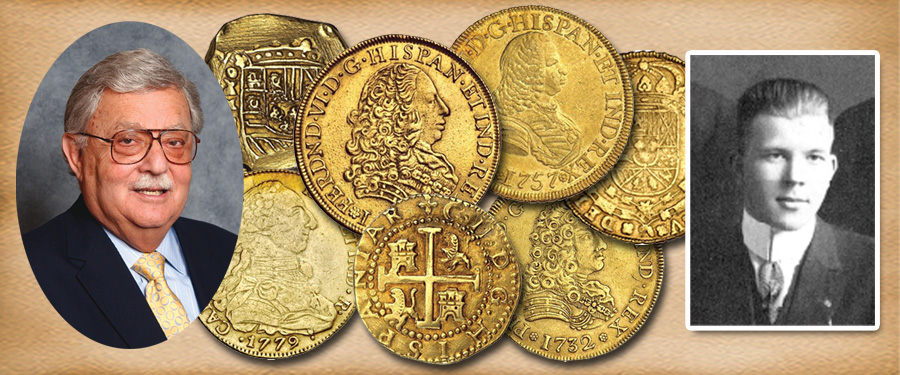
In my last article I left off when Stack’s was
contacted by Mr. Paul Rawley, the chief estate officer at the bank that was the
executors of J.K. Lilly’s estate about an inventory and appraisal of the
collection as well as information about distributing the coins. After further
conversations with Mr. Rawley about the appraisal and our services as
auctioneers, we were advised that according to Indiana Law and Custom, the
appraiser
couldn’t be the seller. That was
disappointing to us, but we under- stood.
Although
Stack’s was not sure what would eventually happen to the collection after the
appraisal, we did not want to lose the possibility of selling it at auction or
by private sale so we asked to be removed as an appraiser. However, we
were pleased to be the ones who inventoried the collection. We
suggested A. Kosoff to appraise the United States coins, and Hans Schulman
to appraise the Foreign and Ancient
collections.
In early August of 1966, my cousin Norman Stack and
I
went to Indianapolis to work on the
inventory. Norman had not seen
all the coins we sold Mr. Lilly from 1951 to 1955 as he had been in the
military stationed in Germany most of that time. Of course, when the
collections were seen in total, it was amazing. Special black box after black box, each holding up to 144 gold
coins, were brought into the large conference room at the bank, and we worked
constantly for almost three full days. We had to verify the inventory, which
would eventually be typed on a
listing so that the appraisers and the bank had reference material. As noted,
Norman had not seen much of the collection. He had never seen the sets of $1,
$2.50, $3, and $4 gold, we got from the Anderson DuPont collections. He was aware of the Clifford Weihman
$5 and $10 gold coins, but had not
seen them for a decade or more
when we had them at Stack’s. And he had never seen the double eagles, a
set that was also almost complete. The
basic collection of pioneer and Territorial coins was also new for him to see. Of course, he was part of the team
after 1955 and was aware of the items that had been acquired after that time.
As a numismatist who understood
the importance of completeness and quality, he was amazed at what Stack’s
and Mr. Lilly had been able to amass.
Using
a file card system we developed for the Lilly collection, Norman and I spent
several days checking off each coin. A few times they were out of order, or in
another tray (the coins that measured over two inches in diameter did not fit
in the standard trays). It was a revealing job for Norman and an exciting
job for me. It was a wonderful opportunity to see once again the
collection in total!
A
few weeks after we visited the collection in the bank vault we had the
inventory typed so it could be used by the appraisers for computing the total
value of the collection. Hans Schulman and Abe Kosoff were the
appraisers, following the suggestions we gave to Paul Rawley. With the
information included in our inventory (including pedigree and source of
acquisition) as well as our examination of each and every coin, the job
of appraising was made somewhat easier for them. Yet, the appraisal by
Kosoff and Schulman took longer than expected. Each took time to check and
research each item; many were so rare that it took much time to find the
reference material and check auction records. In some cases they had to go back
a decade or more to provide the information required for the estate. About five
months after we submitted the inventory, Kosoff and Schulman submitted their
appraisals.
I
will continue my story in my next article.





